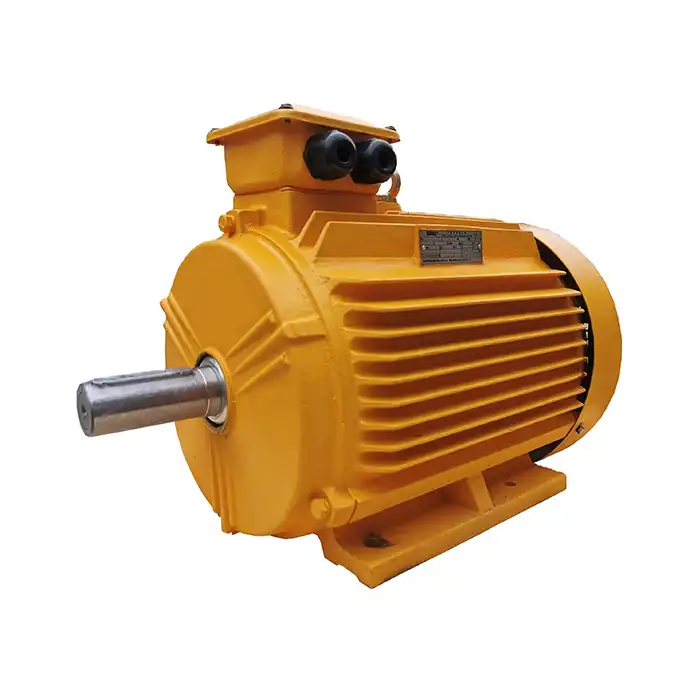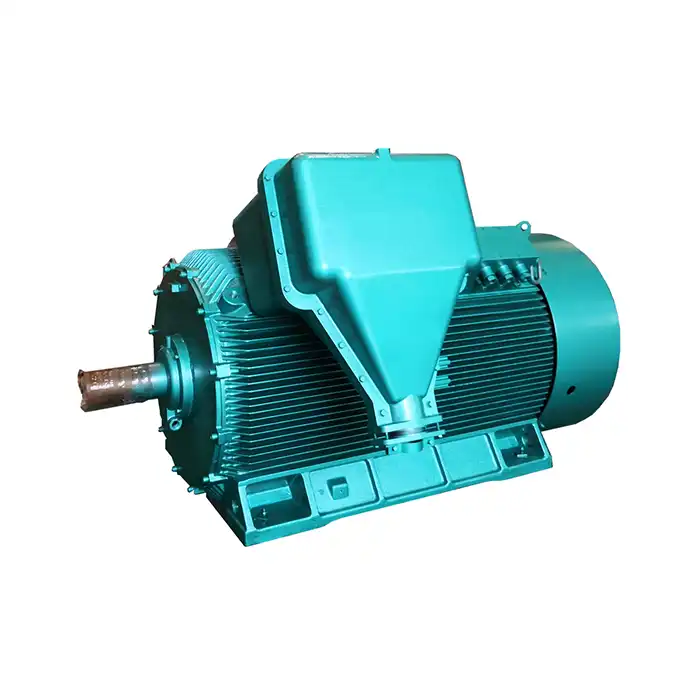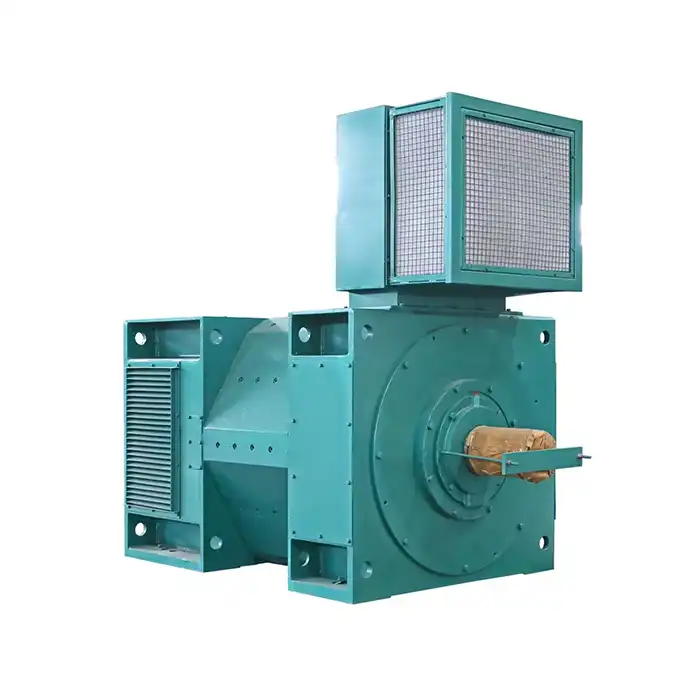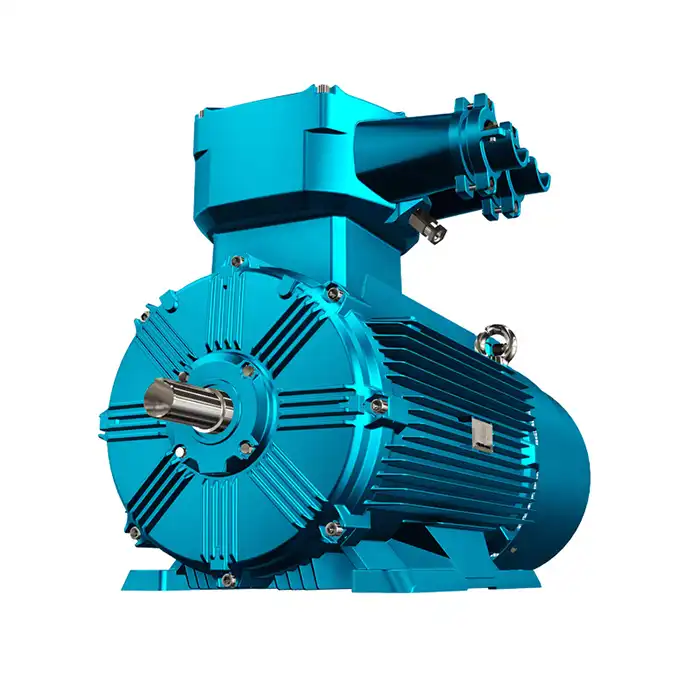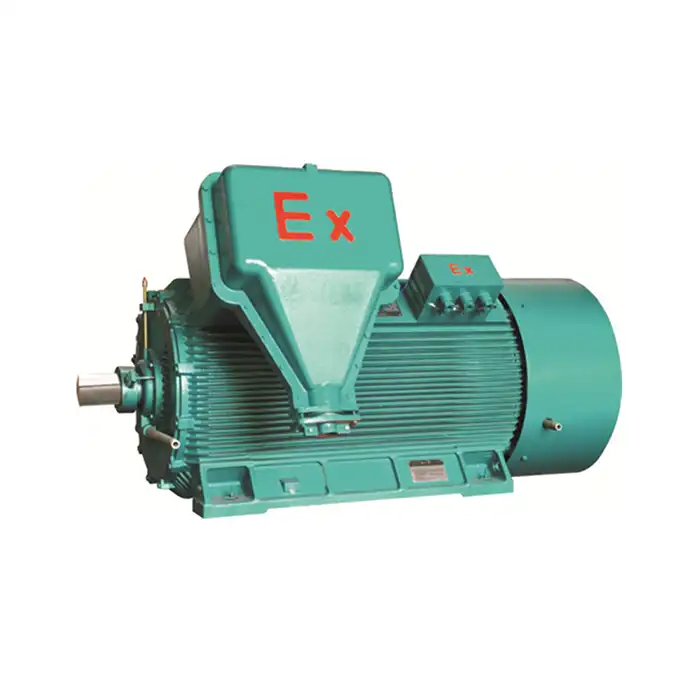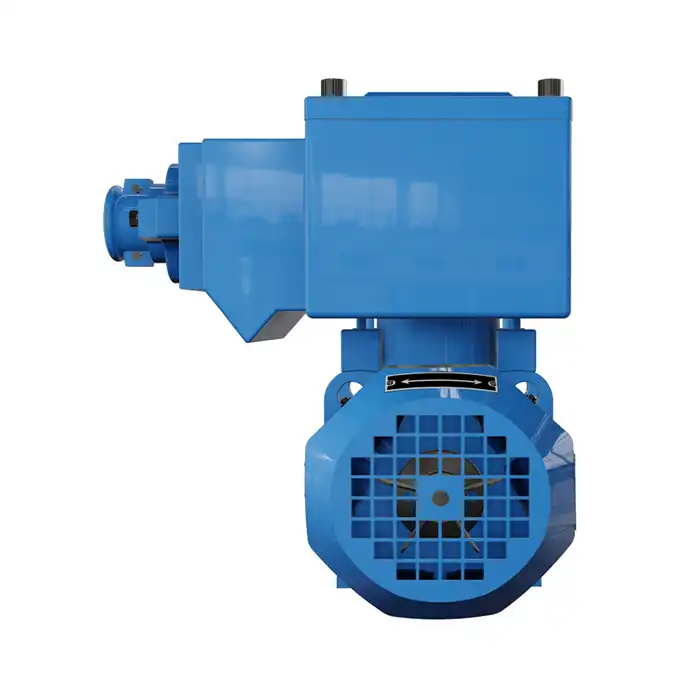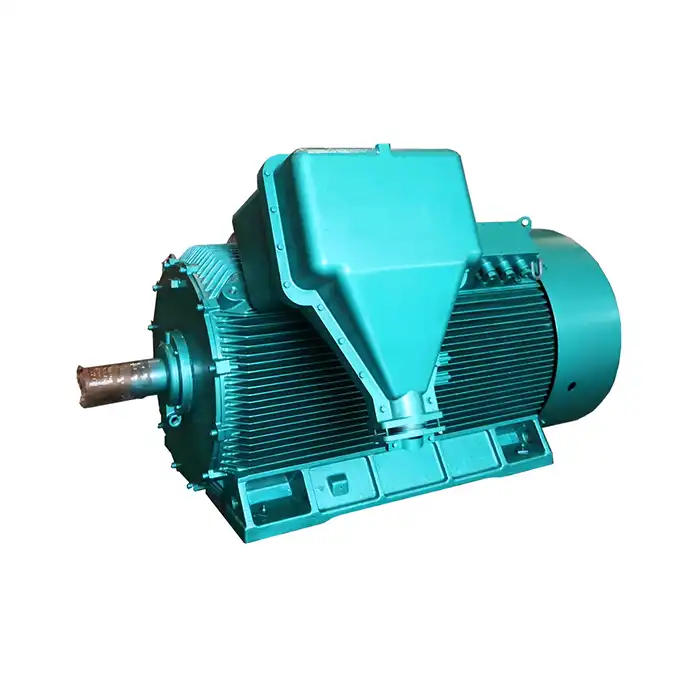
Electromagnetic principles behind 3.3 kV motor operation
The operation of a 3.3 kV motor is based on fundamental electromagnetic principles. These motors convert electrical energy into mechanical energy through the interaction of magnetic fields and electric currents.
Stator and rotor interactions
At the heart of a 3.3 kV motor are two main components: the stator and the rotor. The stator is the stationary part of the motor, consisting of a series of electromagnets arranged in a circular pattern. The rotor is the rotating part, typically made of conductive materials like copper or aluminum.
When three-phase alternating current (AC) is applied to the stator windings, it creates a rotating magnetic field. This field induces currents in the rotor, which in turn generates its own magnetic field. The interaction between these two magnetic fields produces a torque that causes the rotor to spin.
Synchronous vs. asynchronous operation
3.3 kV motors can operate in either synchronous or asynchronous mode. In synchronous motors, the rotor rotates at the same speed as the magnetic field in the stator. This is achieved by using a rotor with permanent magnets or electromagnets that lock into step with the stator's rotating field.
Asynchronous motors, also known as induction motors, have a slight difference in speed between the rotor and the stator's magnetic field. This speed difference, called slip, is necessary for inducing currents in the rotor and generating torque.
Why is winding insulation crucial for 3.3 kV motors?
The insulation of motor windings is a critical aspect of 3.3 kV motor design and performance. Proper insulation ensures the motor's reliability, efficiency, and longevity.
High voltage considerations
Operating at 3.3 kV, these motors deal with significantly higher voltages than their low-voltage counterparts. This high voltage places considerable stress on the insulation materials, requiring them to withstand intense electric fields without breaking down.
The insulation system must prevent electrical current from flowing between adjacent conductors or from conductors to the motor frame. Any failure in the insulation can lead to short circuits, motor damage, or even safety hazards.
Thermal management
Insulation materials in 3.3 kV motors must also contend with high temperatures. As current flows through the windings, heat is generated due to electrical resistance. This heat can degrade insulation over time if not properly managed.
Advanced insulation materials and designs are employed to dissipate heat effectively and maintain the integrity of the windings. This may include the use of thermally conductive materials and innovative cooling systems.
Environmental protection
In many industrial applications, 3.3 kV motors are exposed to harsh environments. The insulation must protect the windings from moisture, dust, chemicals, and other contaminants that could compromise the motor's performance or lifespan.
Manufacturers often use specialized coatings or encapsulation techniques to enhance the environmental protection of the windings. This ensures the motor can operate reliably in a wide range of industrial settings.
Power factor correction in 3.3 kV induction motors
Power factor is a crucial consideration in the operation of 3.3 kV motors. It represents the ratio of real power (that performs work) to apparent power (the total power supplied to the motor). A low power factor indicates inefficient use of electrical power and can result in increased energy costs and reduced system capacity.
Causes of low power factor
Induction motors inherently have a lagging power factor due to their inductive nature. The magnetizing current required to establish the magnetic field in the motor creates a phase shift between voltage and current, resulting in reactive power consumption.
Factors that can further lower the power factor include:
- Motor operation at light loads
- Oversized motors for the application
- Poor motor design or deterioration of motor components
Methods of power factor correction
Improving the power factor of 3.3 kV induction motors is essential for optimizing energy efficiency and reducing operational costs. Several methods can be employed to achieve this:
Capacitor banks
The most common method of power factor correction is the installation of capacitor banks. These devices provide the reactive power needed by the motor, reducing the amount drawn from the supply. Capacitors can be connected directly to the motor terminals or at the distribution board.
Synchronous condensers
In some large industrial applications, synchronous condensers may be used. These are essentially synchronous motors running without a mechanical load. By adjusting their excitation, they can provide or absorb reactive power, helping to correct the power factor of nearby induction motors.
Electronic power factor correction
Advanced electronic systems can provide dynamic power factor correction by continuously monitoring the load and adjusting the compensation accordingly. These systems can respond quickly to changes in motor load or operating conditions.
Benefits of power factor correction
Implementing power factor correction in 3.3 kV induction motors offers several advantages:
- Reduced electricity costs
- Increased system capacity
- Improved voltage regulation
- Reduced losses in the distribution system
- Extended equipment life due to reduced electrical stress
By addressing power factor issues, industrial facilities can significantly enhance the efficiency and performance of their 3.3 kV motor systems.
Conclusion
Understanding the principles behind 3.3 kV motor operation, the importance of winding insulation, and the methods of power factor correction is crucial for optimizing the performance and efficiency of these high-voltage machines. As industries continue to seek more powerful and efficient solutions, the role of 3.3 kV motors in driving large-scale equipment remains significant.
For businesses in industrial automation, HVAC, energy and utilities, or other sectors requiring robust motor solutions, selecting the right 3.3 kV motor is essential. It's important to consider factors such as operational requirements, environmental conditions, and energy efficiency when choosing a motor for your application.
If you're looking for high-quality, energy-efficient 3.3 kV motors or need expert guidance on selecting the right power equipment for your industrial needs, we invite you to reach out to our team at Shaanxi Qihe Xicheng Electromechanical Equipment Co., Ltd. Our specialists are ready to assist you with tailored solutions that meet your specific requirements. Contact us today at xcmotors@163.com to learn more about our range of power equipment and how we can help optimize your operations.
References
- Johnson, R.T. (2019). High Voltage Motor Design: Principles and Applications. IEEE Press.
- Smith, A.B. (2020). Insulation Systems for High Voltage Motors. Journal of Electrical Engineering, 45(3), 278-295.
- Brown, C.D. (2018). Power Factor Correction Techniques in Industrial Systems. Energy Efficiency Quarterly, 22(1), 56-72.
- Lee, S.H., et al. (2021). Comparative Analysis of 3.3 kV Motor Performance in Various Industrial Applications. International Journal of Power Electronics, 33(4), 412-428.
- Garcia, M.P. (2017). Thermal Management Strategies for High Voltage Motor Windings. Thermal Science and Engineering Progress, 4, 206-218.
- Wilson, E.J. (2022). Advanced Control Systems for 3.3 kV Induction Motors. Control Engineering Practice, 119, 104993.



